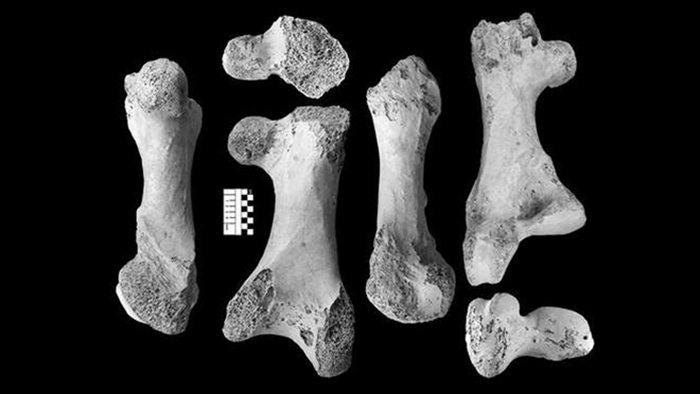There's been more scientific debate over the title of the world's biggest bird than you might have realised, with many candidates coming and going down the years as new discoveries and new research has come to light.
Now though, we may finally have a winner.
Presenting Vorombe titan, a new species of flightless elephant bird identified by researchers at the Zoological Society of London Institute of Zoology in London in the UK.
The newly classified bird has emerged as the biggest ever after a study of the remains of 346 elephant birds, 82 of them fully intact.
Weighing in at up to 860 kilograms (1,895 pounds) and reaching as high as three metres (9.8 feet), V. titan would have roamed the African island of Madagascar until they became extinct around a thousand years ago – most likely due to the influence of prehistoric human settlers arriving in the area.
In fact Madagascar was also home to various other types of megafauna at the time, including giant lemurs, tortoises and hippopotami.
"Elephant birds were the biggest of Madagascar's megafauna and arguably one of the most important in the island's evolutionary history – even more so than lemurs," says one of the researchers, James Hansford.
"This is because large-bodied animals have an enormous impact on the wider ecosystem they live in via controlling vegetation through eating plants, spreading biomass and dispersing seeds through defecation. Madagascar is still suffering the effects of the extinction of these birds today."
Hansford and his colleague Samuel Turvey wanted to clear up the history and species types of the elephant bird once and for all with their new study – previous efforts have been patchy and some older research relies on methods that don't hold up today (like basing size conclusions on egg shells rather than actual bones).
As well as the precise measurement of hundreds of elephant bird bones – pretty much all the remains currently available in the world's museums – the duo also applied some advanced maths and machine learning models to spot patterns in the findings.
 (Zoological Society of London Institute of Zoology)
(Zoological Society of London Institute of Zoology)
In the end they identified three genera and four species, whereas previously experts had settled on two genera and anywhere up to 15 species.
It's the first time in 80 years the family of elephant birds has been rigorously reassessed, and it means the first species to be described by scientists back in the 19th century – Aepyornis maximus – is no longer top in terms of size.
V. titan had been previously identified as part of the A. maximus species, but the new analysis shows it needs to be considered under a new genus name – the shape and size of its bones are significantly different.
With no remaining V. titan birds around to pick up the honour, you may wonder why the detail matters – but the new classifications are going to be very valuable for future research into the history of these birds and the ecosystems around them.
Ultimately, if we can figure out exactly why these birds went extinct – with egg poaching and habitat destruction the likely reasons – then it might just help us avoid making similar damaging mistakes again.
"Without an accurate understanding of past species diversity, we can't properly understand evolution or ecology in unique island systems such as Madagascar or reconstruct exactly what's been lost since human arrival on these islands," says Turvey.
"Knowing the history of biodiversity loss is essential to determine how to conserve today's threatened species."
The research has been published in Royal Society Open Science.
